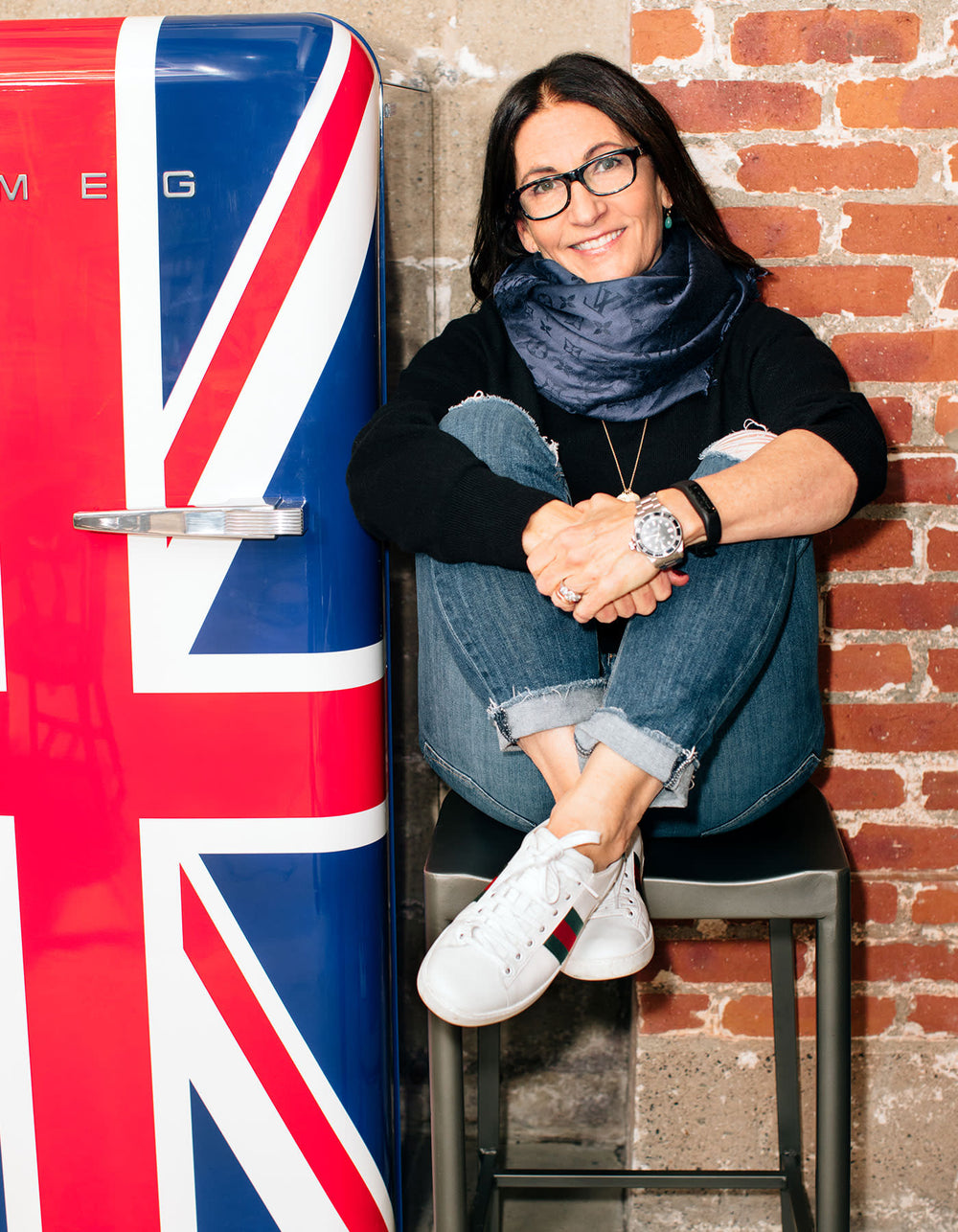Diary / Lifestyle / Sep 26, 2022
How Meg Zucker is Teaching Acceptance & Building Confidence
Written by: Sara Bliss

Meg Zucker wants to transform how kids see not only themselves, but other people as well. Her powerful “Don’t Hide It, Flaunt It” campaign is designed to make an impact on self-acceptance, tolerance, and judgment. Meg, a superstar Wall Street attorney, was born with a genetic condition called ectrodactyly. She never let it stop her, but when her son was bullied for the same condition she wanted to find a way to teach kids about diversity, inclusion, and tolerance. Here, Meg shares the roots of her powerful program and how she’s transformed it into a nationwide movement.
What inspired you to start Don't Hide It Flaunt It?
I started Don't Hide It Flaunt It (DHIFI) after our oldest son of three, Ethan, was bullied on the playground in 1st grade for being different. I passed my genetic condition called Ectrodactyly to both Ethan and his younger brother Charlie. I have only one finger on each hand and shortened forearms and one toe on each foot. The boys have a version of my physical difference. Professionally, I have been a successful Wall Street attorney for over 20 years where I manage a global anti-money laundering and anti-terrorism program at a large international bank. However, after Ethan’s experience at school I decided to also begin education programs in schools to develop and build empathy among students. My hope is for kids to both unconditionally accept themselves and one another. Although preventing bullying and intolerance was an incredibly important goal, there was a gap in the school curriculum to achieve it. To me, posting signs in school hallways to "Be Kind" and "Choose Kindness" was well-intentioned—yet insufficient.
Tell us about the Don’t Hide It Flaunt It program.
DHIFI is now a non-profit and our flagship Kids Flaunt contest curriculum runs annually in all public and private schools. We do it in partnership with Scholastic. Guided by our lesson plan and their own teachers, students are prompted to express themselves with writing or art prompted by our motto, ‘The things that make me different make me, me.’ In addition to the Kids Flaunt programs, we partner with universities and Fortune 500 companies providing additional programs relating to SEL and diversity and inclusion activities.

How did you launch the program?
I decided to contact a few teachers I knew in New York and New Jersey and asked them if I could pilot the Kids Flaunt program. As I suspected, kids that looked or felt different couldn’t wait to share and turn themselves into a someone instead of a something to their peers. However, the rest of the kids often wanted me to know they had nothing to write about—explaining to me that in fact, they were not different. Their response made me even more committed to the program, since once I taught them that we all have our own version of two fingers to hide, something about ourselves or our family we wouldn’t want judged, they began to understand and empathize with their “different” peers for the first time.
And how did you make it a wider mission?
I was very fortunate that Scholastic Parent & Child Magazine profiled me and my Kids Flaunt pilot. So, when I approached the editor to see if Scholastic was interested in partnering with Don’t Hide It, Flaunt It to take our programming into schools formally—they were immediately interested. However, what I naively didn’t realize was that to do so cost money to implement. A few years later I joined my current company and their foundation’s priority is helping youth. We pitched them as to why Kids Flaunt would make an impact in schools and thankfully, we were given the seed money to not only start the program in two states but also to have a “Flaunt It Award” with Scholastic Art & Writing at Carnegie Hall. It was at this time DHIFI Inc. became incorporated as a 501(c)(3) organization.

Tell us about DHIFI now. How does the organization work and how do you actually go about changing perception?
Our key, flagship program is the Kids Flaunt contest that for the past few years has been available in all public and private schools in the U.S. thanks to our funding sources that have grown. There is a specific lesson plan provided to teachers to help guide them through our curriculum with their students. We also plan to incorporate “Project Flaunt” into the curriculum this year, which is essentially a montage of different photos that accompany statements from the kids that makes them, them. DHIFI has embarked on other programs for middle school and high school students. Not only have we brought Project Flaunt to the older students, we have “Flaunt It Clubs” that were initiated in High Schools last year that involves both in-school and community service program activities. Finally, we have most recently, brought DHIFI’s programming to Fortune 500 companies, working with companies to develop diversity and inclusion programming for employees as well as Flaunt It programming for “Take Your Kid to Work Day” which has been a huge success.
How has DHIFI affected your kids? How are they involved in the organization?
DHIFI has without question empowered all three of our children, including Savanna who was not born with our genetic condition but likes people to understand that just as importantly, she has invisible differences like being adopted and being allergic to nuts. All three come with me to speak at schools across the country every year we launch Kids Flaunt. The boys provide their own perspective of what it is like to look different but explain the power of not being consumed by what others think of them. Savanna likes to tell the students that people shouldn’t rush to judgment when they notice someone else that is different. She explains that although strangers see us all together and presume that it must be so hard living with so few fingers and toes, in fact the hardest part of our family’s experience is her severe nut allergy. Mostly, DHIFI has given both Ethan and Charlie wisdom beyond their years and incredible confidence; they proudly flaunt without ever hiding their physical difference.
 Miracle Balm
Miracle Balm
 The Face Pencil
The Face Pencil
 What The Foundation
What The Foundation


